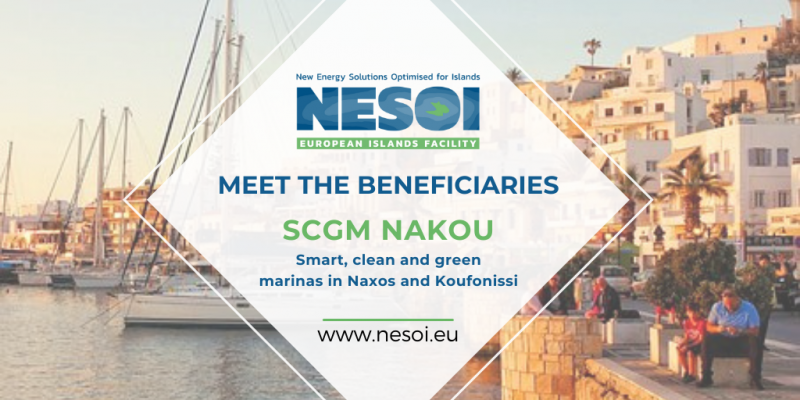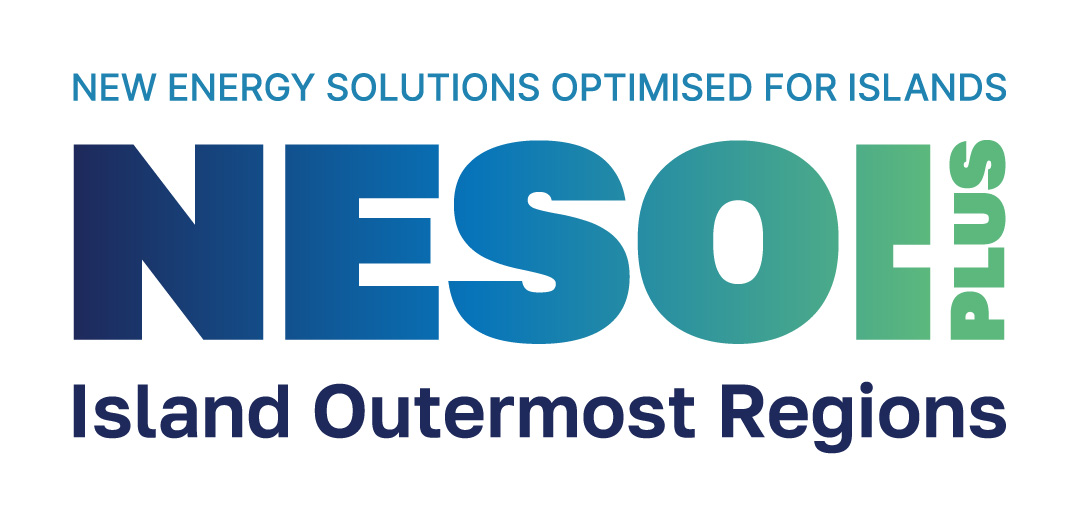Smart, clean, and green marinas in Naxos and Koufonisi (SCGM NAKOU) is a project supported by NESOI European Islands Facility, managed by our partners from RINA-C and promoted by the Municipality of Naxos and Small Cyclades (MoNaSC).
What is SCGM NAKOU?
The project was created to enhance the connection between Naxos (Kalando) and Ano Koufonissi since the weather and unique characteristics of the island of Naxos make it challenging. The construction of a marina at the port of Kalando is a solution for the link with Ano Koufonissi and the future development of the two locations, especially because the Eastern part of Naxos lacks port infrastructure.
More in specific, SCMG NAKOU consists of developing clean, smart, and green marinas, including several modern technologies, with the aim of transforming port infrastructures on the two Greek islands through a combination of sector intervention and a broad development perspective.
Concretely, the project is going to supply each marina with electronic means for local transportation and leisure activities, such as small electric tourist boats, EVs, and e-bikes. Moreover, among the additional services aimed to implement the energy and green transition of the port infrastructures at the marinas will include smart street lighting systems, modern green waste collection points, WC and shower facilities, and a fire-extinguishing network. These infrastructures will be served by smart microgrids, orchestrated by a smart management platform.
Energy and water management on islands: How SCGM NAKOU deals with it?
Because of the island's size, isolation from the mainland, fragility, and limited access to resources, water management on islands (especially small Mediterranean islands) is exceptional. To resolve this issue, small desalination plants are installed as part of the SCGM NAKOU project to supplement the water production from existing water wells during periods of high demand.
Moreover, normally water systems are used as energy flexibility assets. For this reason, water storage tanks are being optimally sized to provide additional energy buffers to the microgrid. High simultaneity of energy consumption and production will be achieved, by utilizing the batteries and taking desalination as a deferrable load by filling the water tanks during hours with more sunshine, using the electricity generated by PV panels.
As the engineer of Naxos Municipality, Aikaterini Margariti stated, it is expected that the transformation of the ports into two more sustainable, well-connected, and innovative marinas, will impact positively stakeholders and local businesses.
In fact, the increase in tourism activity will lead to a parallel increase in the economic activity of local restaurants, rental businesses, and retail while it may also lead to the creation of new workplaces to serve the increased demand. In this sense, four are the permanent new jobs specific to the operation of the marinas that are envisaged.
Moreover, the increase in tourism, the green technologies that will be applied, and the provision for energy-poor households should secure high levels of social acceptance.
Since the underlying technologies are simply reproducible, the concept may be easily implemented in every port facility on a Greek island, particularly on islands with water scarcity problems.
Better suitable are islands with enough electrical space for new RES plants and high seasonality from tourism.
How does NESOI Support this project?
The European Islands Facility (NESOI) aims to unlock the potential of EU islands to become the locomotives of the European Energy Transition. To do so, NESOI aims to mobilize more than €100 Million of investment in sustainable energy projects to give EU islands the opportunity to implement energy technologies and innovative approaches, in a cost-competitive way.
NESOI has contributed to this project through advisory and technical services that have helped in the creation of a good basis for the next steps of the implementation. More in specific, it has provided the following support:
- Assessment of the key project sizing drivers and identification of suitable technological options given existing project sizing requirements.
- Risk analysis and identification of available mitigation strategies and Cost-Benefit analysis and socioeconomic and environmental impact evaluation.
- Definition of the required environmental permitting procedures.
- Assessment of existing procurement options (e.g., tender, PPP, etc.)
- Definition of the technical, economic, and financial., fiscal project inputs.
- Financial modeling and identification of target scenario and identification of financing/funding options.
- Action plan and identification of project monitoring procedures.
DOWNLOAD THE DEDICATED PROJECT BROCHURE FOLLOWING THIS LINK.


